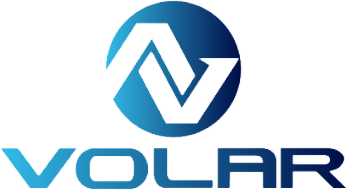The main use of PVC
Release time:
2023-08-15
Polyvinyl chloride plastics have different shapes and great differences, and the processing methods are also various, such as pressing, extrusion, injection, coating, etc. Polyvinyl chloride plastic is often used to make films, artificial leather, insulation layers of wires and cables, hard products, floors, furniture, sports equipment, etc.
PVC polyvinyl chloride products can generally be divided into two categories: hard and soft. No plasticizer is added in the processing of hard products, while a large amount of plasticizers are added in the processing of soft products. PVC polyvinyl chloride is originally a kind of rigid plastic, and its glass transition temperature is 80-85°C. After adding the plasticizer, the glass transition temperature can be lowered, which is convenient for processing at a lower temperature, the flexibility and plasticity of the molecular chain can be increased, and it can be made into soft products that are elastic at room temperature. Generally, the amount of plasticizer added to soft PVC plastics is 30% to 70% of that of PVC.
PVC polyvinyl chloride can be processed into various profiles and products after adding plasticizers, stabilizers, lubricants, colorants, and fillers during processing. The specific uses of PVC are as follows:
1. PVC profiles and profiles
Profiles and profiles are the largest areas of PVC consumption in my country, accounting for about 25% of the total PVC consumption. They are mainly used to make doors, windows and energy-saving materials. At present, their application volume is still increasing significantly nationwide.
2. PVC pipe
PVC pipe is the second largest consumption field of PVC, accounting for about 20% of its consumption. In my country, PVC pipes are developed earlier than polyethylene (PE) pipes and polypropylene (PP) pipes, with many varieties, excellent performance, and a wide range of applications, occupying an important position in the market.
3. PVC film
PVC film is the third largest consumption field of PVC, accounting for about 10% of its consumption. Using a calender, PVC can be made into a transparent or colored film of a specified thickness. The film produced by this method is called a calendered film. PVC granular raw materials can also be blown into a film by a blow molding machine, and the film produced by this method is called a blown film. The use of the film is very large, and it can be processed into packaging bags, raincoats, tablecloths, curtains, inflatable toys, etc. by cutting and heat sealing. Wide sheets of transparent film can be used to build greenhouses and plastic greenhouses, or as mulch.
4. PVC hard material and board
Add stabilizers, lubricants and fillers to PVC, and after mixing, use an extruder to extrude hard pipes, special-shaped pipes, and corrugated pipes of various diameters, which can be used as sewer pipes, drinking water pipes, wire casings or stair handrails . The calendered sheets are superimposed and hot-pressed to make hard plates of various thicknesses. The plates can be cut into desired shapes, and then welded with hot air using PVC welding rods to form various chemical-resistant storage tanks, air ducts and containers.
5. PVC general soft products
Extruders can be used to extrude hoses, cables, wires, etc.; injection molding machines can be used to match various molds to make plastic sandals, shoe soles, slippers, toys, auto parts, etc.
6. PVC packaging material
PVC products are mainly used in packaging for various containers, films and hard sheets. PVC containers are mainly used in the production of mineral water, beverages, and cosmetic bottles, and are also used in the packaging of refined oils.
7. PVC wall panels and floors
PVC siding is mainly used to replace aluminum siding. Except for a part of PVC resin, the other components of PVC floor tiles are recycled materials, adhesives, fillers and other components, which are mainly used on the ground of airport terminal buildings and hard ground in other places.
8. PVC daily consumer goods
PVC products can be seen everywhere in our daily life. PVC is used to make all kinds of imitation leather, used in luggage bags, sports products such as basketball, football and rugby, etc. It can also be used to make belts for uniforms and special protective equipment. PVC fabrics for clothing are generally absorbent fabrics (no coating required), such as ponchos, baby pants, imitation leather jackets and various rain boots. PVC is also used in many sports and entertainment products, such as toys, records and sports equipment.
Key words:
Related News
Aug 15,2023
What are the characteristics of PS polystyrene
Aug 15,2023
Aug 15,2023
Basic understanding of PVC polyvinyl chloride
Aug 15,2023
PET material structure and properties


